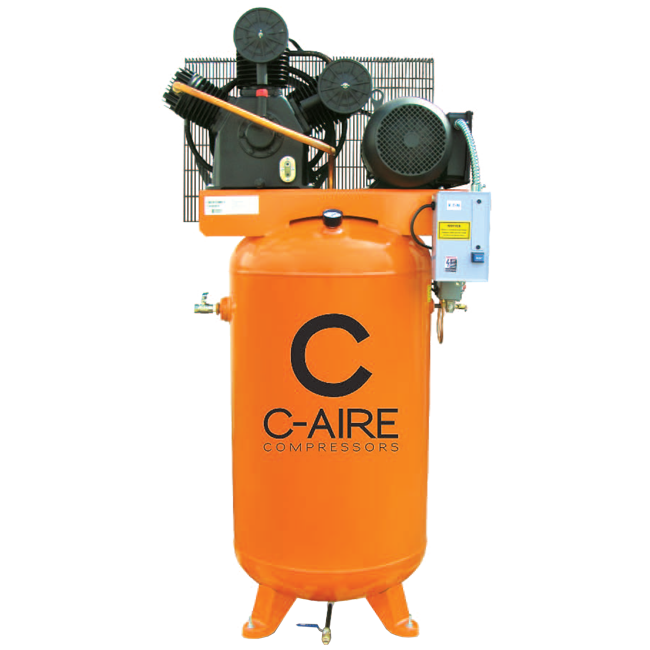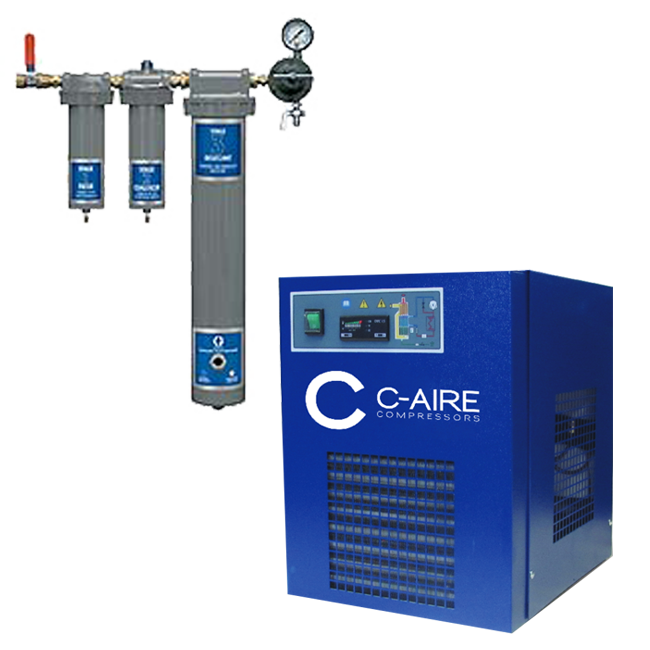Several types of air compressors are available: reciprocating air compressors, which produce compressed air utilizing a piston driven cylinder, and screw compressors, which produce compressed air using two intertwined cylinders. Both types of compressors work well within the spray foam industry.
To prevent damage to the spray equipment it is recommended to utilize a compressed air drier to remove unwanted moisture from the airlines. There are several options available including desiccant, membrane and refrigerated, all work well in spray rig applications.

Air Compressor
When specifying a source of compressed air, you need to consider requirements for air flow (CFM) and pressure (PSI). It is important to choose a compressor that will provide sufficient airflow at the required pressure for your mobile spray rig or in-plant application.
Incoming feed pumps use air motors to move materials from bulk containers to the proportioner
Spray guns use a blast of air to keep the mixing chamber free of formed material
Proportioner material pumps may be air-driven

Compressed Air Dryer
A refrigerated dryer removes moisture from the air through use of a heat exchanger. An air-to-refrigerant heat exchanger is used to cool the air so that the vapor condenses into water. This water is then collected and drained out of the system leaving only dry air.
Desiccant compressed air dryers (also known as Regenerative Desiccant Dryers) run the compressed air through a chamber filled with desiccant, usually activated alumina or silica gel. The desiccant adsorbs the moisture in its millions of pores, trapping it.
The sprayers insurance for removing dirt, water, oil and un-condensed moisture from your compressed air lines
Insure the air dryer you choose (refrigerated or desiccant) meets the air flow (CFM) and pressure (PSI) of the compressor

